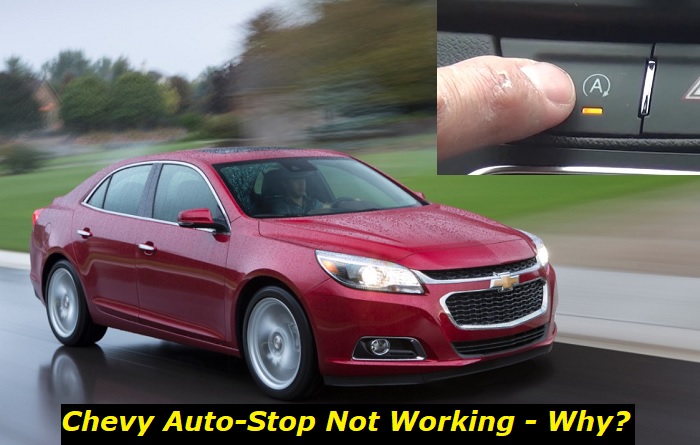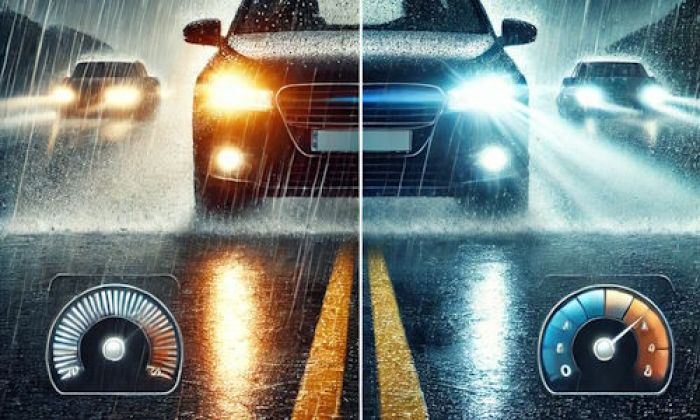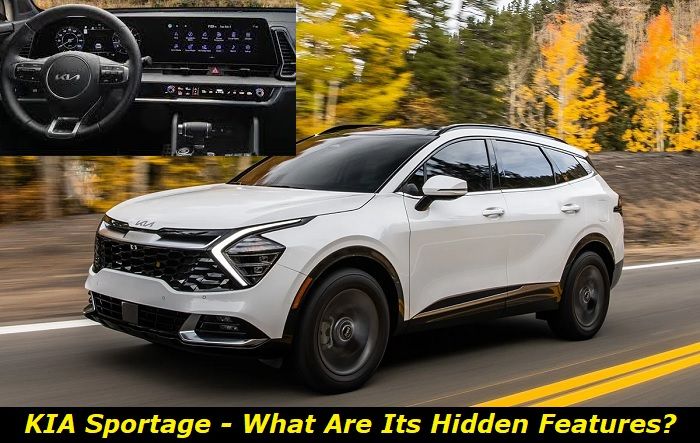Once reserved for hybrid vehicles, the auto start-stop system has received mixed reviews since it became a standard feature in most new cars. This technology automatically starts or stops your engine under certain conditions. Some drivers love the start-stop feature, while others consider it a nuisance. It is best to embrace new technology wherever you stand because it has become prevalent.
Start-stop problems highlights
- Level of urgency:low
- DIY inspection:possible
- DIY repairs:possible
- Can you drive?yes
- Price of repairs:$200 - $350
- Ifignored:start-stopwon'twork
- Ways to fix: check the batteries, use the scanner to read codes

Understanding Start-Stop Technology
Your start-stop technology is designed to kick in automatically and spare you the effort of monitoring your battery power. The technology relies on intelligent sensors that monitor your vehicle's components and takes the initiative to start or stop your engine.
When driving your Chevy and you come to a complete stop, e.g., at a red light, the start-stop technology will turn off your engine. When this happens, your tachometer needle will move to indicate the auto-stop position.
As soon as you take your foot off the brake pedal, your engine will start automatically. Certain conditions in your car, e.g., air conditioning and battery current level, may cause your engine to restart automatically before releasing the brake pedal.
Reasons Your Chevy's Auto Stop Technology is Not Working
Several factors could cause your Chevy's auto start-stop to malfunction. The most common culprit's behind the failure of your stop-start technology are battery health, faulty engine management system, extreme climate, and engine temperature.
If your Chevy's battery has been holding on for dear life for some time, it will likely signal your battery management system to switch off the auto stop feature when in use or stop it from kicking in altogether.
1. Your Chevy's Battery Has Poor Health
Your Chevy's battery is charged with the task of starting your engine and ensuring that all electrical systems receive the current they require. The battery must be compatible with your Chevy and maintained in excellent condition.
Your battery management system automatically disables your start-stop technology whenever the charge levels fall below 80% to 75%. Likewise, when your battery's health is critical, the battery management system will not risk attempting to restart the car and will deactivate the start-stop feature.
When determining whether a failing battery is the cause of your auto-stop feature failing to kick in, you should look out for the following symptoms in your Chevy:
- headlights are dimmers than usual.
- Chevy makes a clicking noise when the key is in the ignition
- engine has trouble starting
Solution
Where the battery is responsible for the failure of your auto-stop technology, the simplest solution is to replace the battery. You must take your Chevy to a licensed dealership that is certified to repair and service your car. Unlicensed auto repair shops may equip your car with an incompatible engine or a cheap after-market alternative. Dealerships ensure that your car is fitted with compatible OEM parts that will work in synergy with the rest of the components.
2. Your Chevy is Equipped with an Incompatible Battery
Your Chevy's battery management system will signal the electronic control unit to shut down the auto start-stop feature when it senses an incompatible battery. Auto start-stop technology utilizes the deep cycle of the battery. This deep cycle can withstand the constant starting and stopping of the engine whenever the technology kicks in.
Whenever your battery management system senses a battery that doesn't register, it will raise the alarm. Installing the wrong battery in your Chevy will supply a few charging cycles that cause the auto start-stop feature to remain off.
Drivers whose auto stop problems are caused by the installation of an incompatible battery are likely to notice the following signs:
- check engine light is flashing
- lights are dim
- engine has trouble starting quickly
- car makes a clicking noise when you turn the key in the ignition
Solution
Your battery management system should be able to detect the battery under your hood. If you did not get your Chevy off the dealership floor, a former owner likely replaced the OEM engine with an inferior one. If you bought the Chevy brand new, yet the battery management system does not recognize the battery, it may be possible that an unscrupulous mechanic swapped your original battery.
It is best to take your Chevy to a licensed dealership or certified auto repair expert for accurate diagnosis and effective repair; The professionals are likely to perform a battery data reset and reprogram your system. Should your auto-stop technology not kick in, your best bet may be to purchase a better battery.
3. Your Chevy is Subjected to Extreme Climate
Drivers who live outside the typical temperature fluctuation ranges usually subject their car's components to too-hot or too-cold climates. When your Chevy is in such a region, the battery operates beyond the temperature ranges envisioned. 'Additional strain is put on the battery because of the extra power needed to cool or warm the passenger cabin.
If your battery management system detects cabin temperature in the extreme range, it is likely to disable the auto start-stop. The battery management system is overruled by comfort settings prioritizing drawing current from the battery over activating the auto start-stop feature.
You will notice these symptoms when your Chevy's auto start-stop feature is affected by your climactic zone:
- the battery has a short life cycle.
- the battery has a build-up of rust or corrosion on its terminals
- the car increases its engine's RPM
- auto stop unavailable warning flashes on the dashboard.
Solution
Your first step should be inspecting your Chevy's comfort settings to check whether your model can support the start-stop tech alongside high current consumption. Additionally, it is advisable to allow your engine to warm up before taking off during cold weather. When it is too hot, ensure your engine's cooling systems are working efficiently.
4. Your Chevy's Engine Coolant Temperature is Extreme
When the coolant in your engine is operating at extreme temperatures, your battery will be under strain. If the temperatures are too cold, your engine relies on the battery to remain warm enough to function. If it is too hot, the engine will drain your battery to keep the radiator fan rotating.
A safety feature in your battery management system shuts off the auto-stop function until the engine begins operating at the optimal temperature range.
The symptoms displayed by Chevy's suffering extreme coolant temperature include
- your Chevy increases its engine RPM.
- auto-stop unavailable light begins to flash.
Solution
It is advisable to check your car's cooling system to determine whether extreme coolant temperatures automatically shut off the auto stop feature. If you do not live in an extremely hot area, you will need a professional diagnosis to determine why Chevy's engine coolant is running hot.
5. Your Chevy has a Faulty Engine Management System.
Your Chevy's electronic control unit will disable the auto-stop feature should it detect a malfunction in the engine management system. If your Chevy engine has other issues, it should not come as a surprise when the auto stop not available warning comes on.
The symptoms of a faulty engine management system include:
- car is displaying a warning light on the dashboard
- vehicle suffers system interruptions
Solution
You will need to repair the prevailing engine trouble before fixing your attention on the auto-stop feature not working.
6. Your Chevy is Suffering Unavoidable Interruptions
Multiple innocent scenarios will cause your auto-stop to fail to kick in. All these situations are not causes for concern; once the interrupting event ends, the auto-stop will kick back in. Failure to fasten your seatbelt or close the car doors can cause the auto stop not to function. Other examples include:
- Parking your Chevy with the wheels turned sharply at an acute angle. In this situation, the battery management system will override your auto start-stop feature when stationary.
- Your Chevy has the hood open.
- Your Chevy's parking assistant is active.
- Your Chevy's reverse gear is engaged.
- Your Chevy is on a steep hill with a very large gradient
- Your Chevy's mass air flow or battery sensors are not working.
- Your Chevy braking system has low vacuum pressure.
Solution
Read your Chevy's user manual to understand what factors will affect the performance of your auto start-stop technology. Additionally, ensuring that all components that interact with your battery management system are in optimal working condition is wise.
Conclusion
If your auto-stop feature is unavailable after the recommended solutions, you are best served by consulting your dealership or certified auto repair expert. The professionals will diagnose the problem and enact effective repairs.
Whether your Chevy requires a new battery or a system reset, you must perform the repairs as soon as possible to ensure your car preserves its fuel efficiency and reduces toxic emissions.
About the authors
The CarAraC research team is composed of seasoned auto mechanics and automotive industry professionals, including individuals with advanced degrees and certifications in their field. Our team members boast prestigious credentials, reflecting their extensive knowledge and skills. These qualifications include: IMI: Institute of the Motor Industry, ASE-Certified Master Automobile Technicians; Coventry University, Graduate of MA in Automotive Journalism; Politecnico di Torino, Italy, MS Automotive Engineering; Ss. Cyril and Methodius University in Skopje, Mechanical University in Skopje; TOC Automotive College; DHA Suffa University, Department of Mechanical Engineering






Add comment